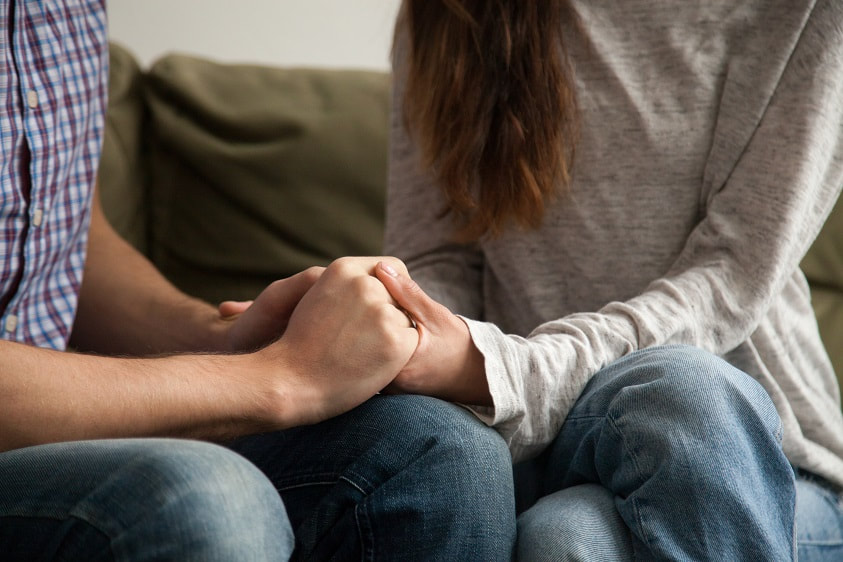|
When we think of what human emotion binds us to one another, the first that might come to mind is the emotion of love. This certainly applies to our relationships with our children or our pets, those who are or who have been dependent on us for their survival. Our unconditional love and devotion create a bond that is likely to last forever. However, a more fundamental emotion is necessary for love to develop when we are vulnerable. In other kinds of relationships, such as between lovers and spouses, friendships, partnerships, and in the case of children in relation to their parents or caretakers, there is an element of risk involved. In these kinds of relationships the emotional bond that develops into love is more complicated. Trust must be established before a stable bond can unfold and love can spring forth and flourish.
Where Does Trust Come From? As with most every basic emotion of human development, trust begins within the matrix of the bond that forms between infant and caretaker. “Good-enough mothering,” a term introduced by the English psychoanalyst, Donald Woods Winnicott, refers to the nature of the relationship between mother and infant that promotes healthy emotional development. In order for a child to feel secure, his mother needn’t be perfect yet must be sufficiently reliable and responsive to the child’s needs. At the same time an anxious or overly protective caretaker conveys to the infant that the world is a dangerous place beyond the child’s capacity to learn to manage on their own. According to the psychoanalyst, Erik Erikson, in his landmark book, Childhood and Society (1950), Distrustfulness as a Personality Trait When trust fails to form as it should in early childhood, dysfunctional attachment patterns are likely to emerge in personality development that may be characterized by separation anxiety or anxious, clingy, insecure attachment, avoidant or emotionally distant personality characteristics, or disorganized or ambivalent attachment styles that can lead to unwittingly sending mixed signals in relationships. As Theresa Miller discusses in her book, Anxiety in Relationship (2019), a self-help book to help people who are overly anxious in relationships, problems such as excessive jealousy, obsessive attachment, fear of abandonment, and controlling behavior can ensue from an anxious attachment style. Anxious attachment can also manifest from low self-esteem. Healthy self-esteem is necessary to build a healthy relationship. Knowing and Trusting Ourselves One of the pioneers in the study of trust in relationships, Sidney Jourard, in his book, The Transparent Self (1971), pointed out how intimacy requires transparency which in turn requires honesty and courage. According to Jourard, in order to be in a relationship one must also be able to enjoy being alone, a time necessary to know in a deeper sense what one’s truer values are. Consistent with the 18th century romantic philosopher, Jean Jacques Rousseau, who was a proponent of loving oneself when it was a heretical idea, Jourard discussed how living in a social world can squelch expression of our true selves in order to avoid criticism and ostracism. While Jourard was writing during an era in American history when self-exploration and self-expression were in a renaissance his caveats still ring true today. In order to be authentic in a relationship, a necessary condition for trust to develop, one should be as open as possible to oneself. And as David Richo in his book, Daring to Trust (2013), reminds us, in order for us to be able to trust others it is equally important that we learn to trust ourselves. Eight Principles to Building a Trusting Relationship Here are some tips I have learned from my professional practice and from personal experience that will help you develop a healthy, trusting relationship:
0 Comments
|
Robert Hamm Ph.DPsychologist Archives
June 2023
Categories |

 RSS Feed
RSS Feed